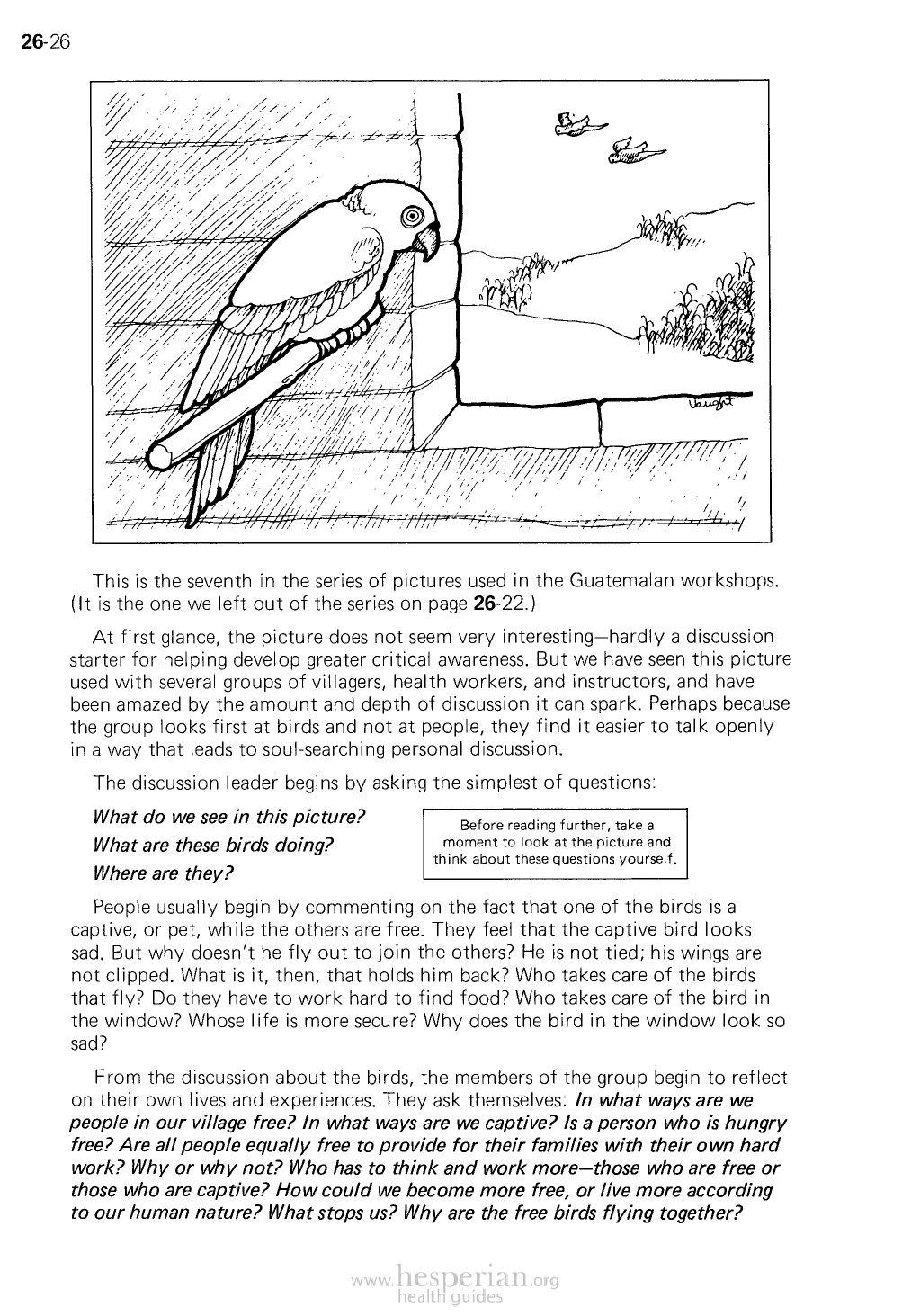
26-26
This is the seventh in the series of pictures used in the Guatemalan workshops.
{It is the one we left out of the series on page 26-22.)
At first glance, the picture does not seem very interesting-hardly a discussion
starter for helping develop greater critical awareness. But we have seen this picture
used with several groups of villagers, health workers, and instructors, and have
been amazed by the amount and depth of discussion it can spark. Perhaps because
the group looks first at birds and not at people, they find it easier to talk openly in a
way that leads to soul-searching personal discussion.
The discussion leader begins by asking the simplest of questions:
What do we see in this picture?
What are these birds doing?
Where are they?
Before reading further, take a
moment to look at the picture and
think about these questions yourself.
People usually begin by commenting on the fact that one of the birds is a captive,
or pet, while the others are free. They feel that the captive bird looks sad. But why
doesn’t he fly out to join the others? He is not tied; his wings are not clipped. What
is it, then, that holds him back? Who takes care of the birds that fly? Do they have
to work hard to find food? Who takes care of the bird in the window? Whose life is
more secure? Why does the bird in the window look so sad?
From the discussion about the birds, the members of the group begin to reflect on
their own lives and experiences. They ask themselves: In what ways are we people
in our village free? In what ways are we captive? Is a person who is hungry
free? Are all people equally free to provide for their families with their own hard
work? Why or why not? Who has to think and work more—those who are free or
those who are captive? How could we become more free, or live more according
to our human nature? What stops us? Why are the free birds flying together?